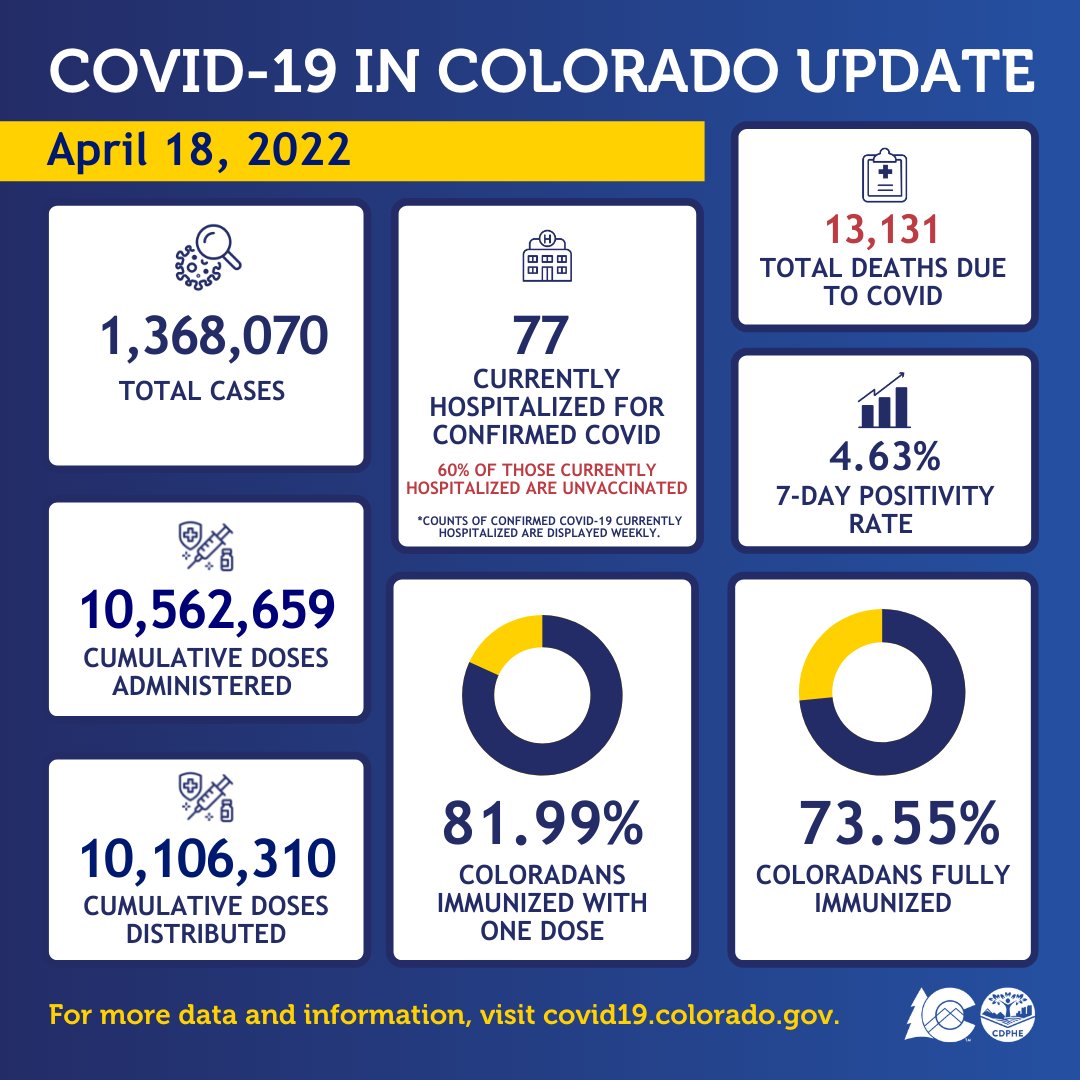CDPHE – Colorado.gov

Executive Summary: Air Quality Status and SDG Alignment
This report details the air quality conditions for Colorado’s Front Range Urban Corridor. Currently, no air quality advisories are in effect. The Air Quality Index (AQI) indicates moderate conditions, which has direct implications for public health, aligning with Sustainable Development Goal 3 (Good Health and Well-being). Ongoing monitoring and seasonal programs are critical components of the region’s strategy to foster Sustainable Development Goal 11 (Sustainable Cities and Communities) by ensuring a healthy living environment for all residents.
Current Air Quality Assessment (As of October 19, 2025)
Overall Conditions
No advisories are currently active for the region spanning from Douglas County to Larimer and Weld counties. This includes the Denver-Boulder, Fort Collins, and Greeley metropolitan areas.
Air Quality Index (AQI) Data
- Time of Reading: 12:00 PM (MST)
- Primary Pollutant: Ozone
- AQI Value: 51
- Classification: Moderate
Public Health Recommendations and SDG 3
In line with the objectives of SDG 3, which aims to ensure healthy lives and promote well-being, a public health recommendation has been issued. The moderate AQI level may cause respiratory symptoms in unusually sensitive individuals. Therefore, it is advised that these individuals consider reducing prolonged or heavy outdoor exertion to mitigate potential health impacts.
Air Quality Forecast and Pollutant Analysis
Forecast Period: Friday, October 17 – Monday, October 20, 2025
The forecast indicates favorable air quality, which is essential for maintaining a healthy and sustainable urban environment as outlined in SDG 11.
- Ozone: Concentrations are expected to be in the Good category.
- Fine Particulate Matter: Concentrations are expected to be in the Good category.
- Carbon Monoxide: Concentrations are expected to be in the Good category.
- Nitrogen Dioxide: Concentrations are expected to be in the Good category.
- Visibility: Expected to be Good to Moderate.
Seasonal Air Quality Programs and Collaborative Governance (SDG 17)
Program Transition
The management of air quality involves distinct seasonal strategies. The Summer 2025 Ozone Action Day Alert Program has concluded. The Winter 2025/2026 High Pollution Advisory Program is scheduled to commence on November 1.
Partnerships for the Goals (SDG 17)
The successful implementation of these programs relies on effective collaboration between governmental bodies. The partnership between the Colorado Department of Public Health and Environment (CDPHE) and the Regional Air Quality Council (RAQC) exemplifies SDG 17 (Partnerships for the Goals), showcasing a coordinated effort to protect public health and the environment.
Action Day Protocols
An “Action Day” is declared when air quality is unhealthy or is projected to become unhealthy. These declarations are a critical tool for achieving health and sustainability goals.
- They trigger mandatory pollution prevention measures, such as restrictions on open and indoor burning.
- They promote voluntary actions, including driving reductions, to lessen air pollution.
- These protocols directly support SDG 3 by protecting citizens from harmful pollutants and SDG 11 by actively managing urban air quality.
Public Engagement and Contribution to Climate Action (SDG 13)
Citizen Responsibility and Health (SDG 3)
Public awareness and participation are vital. Ground-level ozone poses a significant health risk, and individual actions can collectively improve air quality. Reducing personal emissions helps decrease ozone production, contributing to better community health.
Individual Actions for Collective Impact (SDG 11 & SDG 13)
The “Simple Steps. Better Air.” program encourages residents to adopt practices that support cleaner air. These actions not only enhance local livability (SDG 11) but also contribute to broader climate objectives (SDG 13) by reducing emissions from sources like transportation.
- Reduce Vehicle Trips: Combining or skipping car trips has a measurable positive impact on air quality and reduces carbon emissions.
- Adhere to Burning Restrictions: Compliance with open burning prohibitions and indoor burning restrictions during Action Days is mandatory to prevent the worsening of air quality.
- Stay Informed: Utilize official resources, including government websites and notification systems, to stay aware of current conditions and advisories.
Analysis of Sustainable Development Goals in the Article
1. Which SDGs are addressed or connected to the issues highlighted in the article?
-
SDG 3: Good Health and Well-being
The article directly addresses public health by linking air quality to human well-being. It issues health advisories, such as “Unusually sensitive people should consider reducing prolonged or heavy outdoor exertion,” and notes that exposure to pollutants like ground-level ozone can “cause acute respiratory problems and trigger asthma attacks.” The entire purpose of the advisory is to inform the public to prevent illness, aligning with the goal of ensuring healthy lives.
-
SDG 11: Sustainable Cities and Communities
The focus of the article is on the “Front Range Urban Corridor,” which includes major metropolitan areas like Denver, Boulder, Fort Collins, and Greeley. By monitoring and managing air quality in this urban region, the article’s subject matter directly relates to making cities and human settlements inclusive, safe, resilient, and sustainable. The implementation of programs like the “Ozone Action Day Alert Program” is a key strategy for managing the environmental impact of cities.
-
SDG 13: Climate Action
While not explicitly mentioning climate change, the article discusses the management of air pollutants (Ozone, Particulate Matter, Carbon Monoxide) that often share sources with greenhouse gases, such as vehicle emissions and burning. The article promotes actions like “voluntary driving reductions” and restrictions on “open burning,” which are measures that not only improve local air quality but also contribute to reducing the carbon footprint, thus aligning with broader climate action goals.
2. What specific targets under those SDGs can be identified based on the article’s content?
-
Target 3.9: Substantially reduce the number of deaths and illnesses from hazardous chemicals and air, water and soil pollution and contamination.
The article’s core function is to mitigate the health impacts of air pollution. By issuing advisories for ozone and other pollutants, it aims to prevent illnesses, especially among sensitive groups. The text explicitly states that Action Days convey “overarching public health recommendations” to protect citizens from unhealthy air quality, directly contributing to this target.
-
Target 11.6: Reduce the adverse per capita environmental impact of cities, including by paying special attention to air quality.
The article is a clear example of a system designed to address this target. It details a comprehensive program for monitoring, forecasting, and managing air quality within a major urban corridor. The focus on pollutants like ozone, fine particulate matter, and carbon monoxide, and the use of the Air Quality Index (AQI) to inform the public, are direct actions aimed at reducing the adverse environmental impact of the city on its inhabitants.
-
Target 13.2: Integrate climate change measures into national policies, strategies and planning.
The existence of the “Winter High Pollution Advisory Program” and the “Summer Ozone Program” demonstrates the integration of environmental management strategies into regional planning. These programs, which call for “voluntary driving reductions” and restrictions on burning, are policies that address sources of pollution linked to climate change, thereby serving as integrated measures that benefit both local air quality and climate action.
3. Are there any indicators mentioned or implied in the article that can be used to measure progress towards the identified targets?
-
Air Quality Index (AQI)
The article explicitly mentions the AQI as a key metric. It states, “At 12PM (MST), Sunday, 10/19/2025 the highest AQI value was 51 for Ozone which indicates Moderate air quality.” The AQI is a direct, quantitative indicator used to measure air pollution levels and communicate health risks to the public, serving as a measure for progress under Targets 3.9 and 11.6.
-
Concentrations of Specific Pollutants
The article details forecasts for specific pollutants, stating that “Ozone concentrations are expected to be in the Good category” along with Fine Particulate Matter, Carbon Monoxide, and Nitrogen Dioxide. The measurement of these specific pollutant concentrations is a fundamental indicator for assessing air quality and is directly related to SDG Indicator 11.6.2 (Annual mean levels of fine particulate matter in cities).
-
Visibility Standard Index
The article mentions a separate “Visibility Standard Index” which is used to declare an “Action Day for Visibility.” This serves as another specific indicator used by authorities to monitor a particular aspect of air pollution and trigger public action.
-
Frequency of “Action Days”
The article defines and frequently refers to “Action Days.” The number of Action Days issued over a season or year is an implied indicator of the frequency of poor air quality events. A reduction in the number of Action Days would signify an improvement in overall air quality and progress towards the targets.
4. Summary Table of SDGs, Targets, and Indicators
| SDGs | Targets | Indicators |
|---|---|---|
| SDG 3: Good Health and Well-being | Target 3.9: Substantially reduce illnesses from air pollution. |
|
| SDG 11: Sustainable Cities and Communities | Target 11.6: Reduce the adverse per capita environmental impact of cities, paying special attention to air quality. |
|
| SDG 13: Climate Action | Target 13.2: Integrate climate change measures into policies, strategies and planning. |
|
Source: colorado.gov

What is Your Reaction?
 Like
0
Like
0
 Dislike
0
Dislike
0
 Love
0
Love
0
 Funny
0
Funny
0
 Angry
0
Angry
0
 Sad
0
Sad
0
 Wow
0
Wow
0















































/environment-climate-change-and-health-(ech)/water-sanitation-hygiene-and-health-(wsh)/landfill-tuvalu-36092.tmb-1200v.jpg?sfvrsn=5c21fe40_1#)


.jpg.webp?itok=0ZsAnae9#)

























